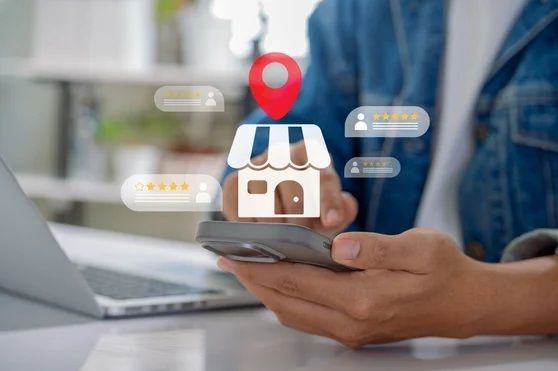
Summary: Remember 1995 when you could only surf the web? Now we have Web3 with blockchain and the metaverse. Read on to learn how the web has evolved.
The speed at which the web evolves is moving faster. Dan Monaghan, Founder of Clear Summit Group and Co-Founder of WSI, was a keynote speaker at last year’s Springboard event, where he spoke about “Web3 and The Changing Digital Landscape for Businesses”. We share some of his insights.
How Is Web3 Different From Web 1.0 And Web 2.0?
In 1995, we had Web 1.0, where people debated what the @ sign really stood for, and others stated every business would be on the internet by the year 2000. People could only surf the web and visit existing websites, and service providers were all scrambling to get more users online (does anyone remember getting those AOL CDs in the mail?). In 1996, the first McDonald’s website was created, and franchisors started to adopt Web 1.0.
With Web 2.0, users began to contribute to the web rather than just surfing it. Wikipedia leveraged the knowledge of the crowds, and social media such as Facebook and Instagram created communities and user-generated content.
In today’s Web 2.0, central platforms (like Meta, Alphabet, and Amazon) own and control everything. Their centralized business model means we (the users) get free services, but they (the platforms) are able to sell our privacy, information, and attention to the highest bidder.
All of that is going to change with Web3 because Web3 is all about decentralization.
What Is Web3?
Web3 is trustless and permissionless, offering an immersive experience and the semantic web. To understand Web3 and decentralization, you must understand blockchain, as it is the underlying technology at the core of Web3.
All sites, platforms, and companies in Web 1.0 and Web 2.0 had a central database. That was the single point of truth that the owners of these platforms owned and managed to control access to their platforms. But blockchain (and Web3) decentralizes the database by sharing it with all the nodes in the network. In Web3, there is no single database—Web3 is fully transparent and incorruptible because it is fully visible to everyone.
Blockchain ultimately means that users don’t have to rely on trust anymore. For example: when you use your bank’s online portal to pay your bills or send an e-transfer to a friend, you are trusting your bank and that their database is protecting your privacy.
In Web3, and thanks to blockchain’s transparency, trust is not required.
Web3 is also an immersive experience. We are already addicted to our phones: just imagine being able to enter the world displayed on our phones and how potentially addictive and transformational that may be.
What is the semantic web? You will hear more about it in the future, but it is where the web is able to come to life. Machines will consume content, just like humans will. In the semantic web, the web is used for machines to communicate with machines.
Concepts Created Through Blockchain
The technology behind blockchain allows users to create things that we could never do before, such as cryptocurrency, non-fungible tokens (NFTs), smart contracts, decentralized autonomous organizations (DAOs), decentralized finance (Defi), and the metaverse.
What do all of these things mean? Let’s drill down on the concepts.
Cryptocurrency
There are currently thousands of cryptocurrencies in the market, of which Bitcoin is the biggest. Cryptocurrency allows people to interact outside the bounds of financial systems, governments, and countries. It is a human-to-human payment, and in the future, we will hear more about cryptocurrency micropayments. Bitcoin is also fungible – meaning every bitcoin has the same value.
NFTs
Vitalik Buterin invented Ethereum, tokens that are smart and unique in the blockchain ecosystem, thus making them non-fungible. Non-fungible tokens (NFTs) create unique ownership of digital assets and allow us to do things digitally we could never do before.
As an example, look at Burger King’s “Keep It Real Meals”, where they gamified NFTs to unlock unique experiences for consumers.
DAO
Decentralized autonomous organizations (DAOs) are another way of using NFTs and cryptocurrency. People with cryptocurrency put funds together and form a DAO. That DAO can then work together to make larger purchases. For example, the ConstitutionDAO raised $47 million to buy an original copy of the U.S. Constitution. The FriesDAO pooled cryptocurrency to purchase a fast food enterprise.
Metaverse
In the last few years, a lot of hardware, software, and infrastructure has been created that allows the metaverse to exist, but it is still very much in its infancy. Where will the metaverse be? Everywhere – there will be multiple virtual worlds, and thanks to blockchain, you can carry your virtual assets from world to world.
Other Trends To Watch
Blockchain is starting to disrupt business models and companies. Drife is a blockchain-based drive-sharing program challenging Uber. There are automated restaurants such as Mezli, and artificial intelligence (AI) is taking over content writing. An AI-generated artwork won a competition.
Disruption usually comes from outside the industry it is disrupting, and things that appear to be happening gradually around us quickly gather steam and then happen suddenly.
WSI is flexible and responds to shifting trends in digital marketing. Do you need help with your online marketing strategy and want to know which techniques will be relevant to the web of the future?
Then don’t wait any longer: contact us today.
About the Author
Rick spent 20 years in the insurance industry in finance, primarily developing reporting platforms for B & C stakeholders. His ability to speak to consumers of data (managers and analysts) and translate their needs to programmers led him to start his own digital marketing agency in 2004 to develop data driven solutions for business owners.
The Best Digital Marketing Insight and Advice
We are committed to protecting your privacy. For more info, please review our Privacy and Cookie Policies. You may unsubscribe at any time.
Don’t stop the learning now!


